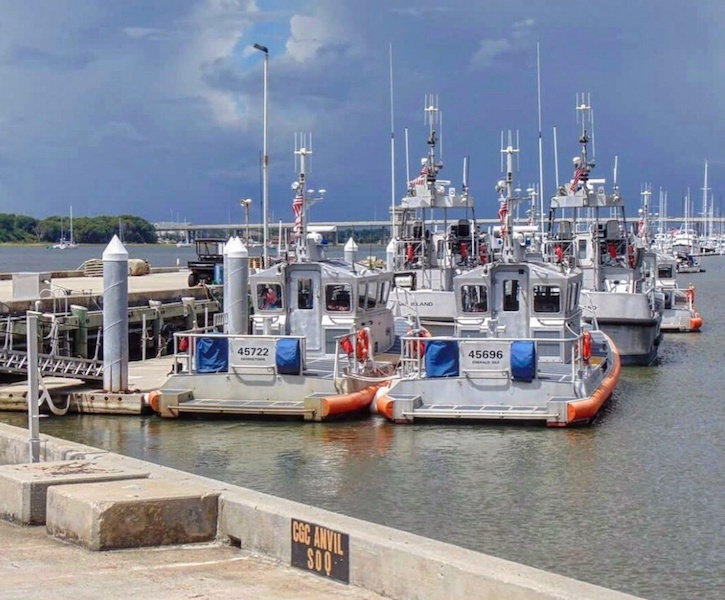The Government Accountability Office (GAO) issued a report earlier this month on the Coast Guard’s shore infrastructure. It found that 45% of the shore infrastructure is beyond its service life and its current backlogs of maintenance and recapitalization projects, as of 2018, will cost at least $2.6 billion to address.
The GAO was asked to review the Coast Guard’s management of its shore infrastructure. The report examines what is known about the condition and costs of managing the Coast Guard’s shore infrastructure, and the extent to which the Coast Guard’s process for managing its shore infrastructure meets leading practices.
The Coast Guard's deferred maintenance backlog included more than 5,600 projects, with an estimated cost of $900 million, the GAO report said. The recapitalization and new construction backlog had 125 projects, with an estimated cost of at least $1.77 billion as of 2018. The GAO’s analysis of Coast Guard data found that as of November 2018 there were hundreds of recapitalization projects without cost estimates — the majority of recapitalization projects. Coast Guard officials told GAO that these projects are in the preliminary stages of development.
In June 2017, the Coast Guard testified to Congress that it had a $1.6 billion recapitalization backlog for its shore infrastructure, which had a replacement value of about $20 billion.
The Coast Guard’s process for managing its shore infrastructure did not fully meet six of nine leading practices that GAO previously identified. Of the nine leading practices, the Coast Guard met three, partially met three, and did not meet three. For example, the GAO said that the Coast Guard generally has not employed models for predicting the outcome of maintenance investments and optimizing among competing investments, as called for in leading practices. In one instance, the Coast Guard used a model to optimize maintenance for its aviation pavement and, according to Coast Guard officials, found that it could save nearly $14 million by accelerating investment in this area (e.g., paving runways) sooner rather than deferring such maintenance. Coast Guard officials told the GAO that such modeling could be applied within and across all of its shore infrastructure asset types, but the Coast Guard did not implement the results of this model and does not require their use. Without requiring the use of such models, the Coast Guard could be missing opportunities to achieve cost savings and better manage its maintenance backlogs.
The GAO made six recommendations, which DHS agreed to implement, including that the Coast Guard align its management of its shore infrastructure backlogs with leading practices by requiring the use of models for predicting the outcome of, and optimizing among, competing investments for maintenance projects.
In its conclusion, the GAO said that the Coast Guard’s inventory of shore infrastructure assets is vast, aging, and vulnerable to damage from extreme weather. Many of these assets are also critical to the Coast Guard’s operational mission performance. The Coast Guard has taken some steps to manage this infrastructure by implementing three of nine leading practices for managing public sector maintenance backlogs, including identifying assets that are mission critical, identifying risks posed by untimely investments, and identifying the primary methods for delivering maintenance and repair activities.
However, significant work remains if the Coast Guard is going to make headway on reducing its backlog of at least $2.6 billion. Fully implementing the three leading practices that the Coast Guard now partially meets could help ensure that it benefits from establishing timeframes for and enhancing its guidance, establishing its performance metrics, baselines, and targets, and shedding unneeded assets. Additionally, fully implementing the leading practices that it does not meet, including implementing new approaches for documenting its project prioritization decisions, developing models that could help identify cost savings, and providing Congress with transparent and requirements based budget requests that clearly identify alternatives and trade-offs, could help the Coast Guard more efficiently manage existing resources and better position the Coast Guard and Congress to address the shore infrastructure challenges.





